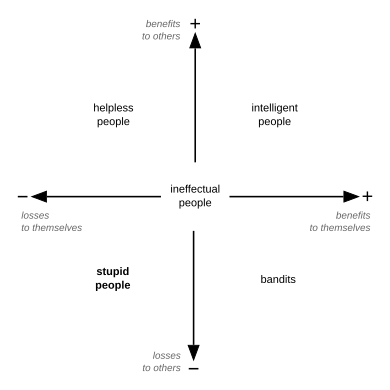Carlo M. Cipolla facts for kids
Quick facts for kids
Carlo M. Cipolla
|
|
|---|---|
| Born | 15 August 1922 |
| Died | 5 September 2000 (aged 78) Pavia
|
| Nationality | Italian |
| Field | Economic history |
| Alma mater | University of Pavia University of Paris London School of Economics |
Carlo M. Cipolla (born August 15, 1922 – died September 5, 2000) was a famous Italian economic historian. He studied how economies and societies changed over time. He was also a member of important groups like the American Academy of Arts and Sciences.
Contents
About Carlo Cipolla
When Carlo Cipolla was young, he wanted to teach history and philosophy. He went to the University of Pavia in Italy. There, he met a professor who taught about the medieval economic history. This made Cipolla fall in love with economic history. He finished his studies in Pavia in 1944. Later, he also studied in Paris and London.
Cipolla started teaching economic history when he was 27 years old. He taught in many cities in Italy, like Venice and Turin. He also taught in the United States. In 1953, he went to the US as a special scholar. By 1957, he was teaching at the University of California, Berkeley. He became a full professor there two years later.
His Famous Essays
Carlo Cipolla wrote two short, popular essays. He first shared them with friends in the 1970s. They were later published in a book called Allegro, ma non troppo in 1988. This title means "Forward, but not too fast" or "Happy, but not too much."
Spices and History
The first essay was about "The Role of Spices (and Black Pepper in Particular) in Medieval Economic Development." In this essay, Cipolla looked at how spices, especially black pepper, were connected to how much the population grew in the Middle Ages. It showed interesting links between trade and people.
The Basic Laws of Human Stupidity
The second essay is called "The Basic Laws of Human Stupidity." It talks about a topic that can be a bit funny and serious at the same time: stupidity. Cipolla saw stupid people as a powerful group. He believed they could cause a lot of problems, even more than big organizations.
Cipolla wrote down five main laws about stupidity:
- Law 1: Everyone always underestimates how many stupid people there are.
- Law 2: Whether someone is stupid doesn't depend on anything else about them.
- Law 3: A stupid person causes harm to others or a group. They don't gain anything themselves, and might even lose something.
- Law 4: Smart people always underestimate how much damage stupid people can do. They often forget that dealing with stupid people is always a mistake.
- Law 5: A stupid person is the most dangerous kind of person.
- Important idea: A stupid person is more dangerous than a thief.

* Helpless people help society but are taken advantage of. * Intelligent people help society and also benefit themselves. * Stupid people harm both themselves and others. * Bandits only care about themselves, even if it hurts society.
Cipolla used two main ideas to understand human behavior:
- How much an individual helps or harms themselves.
- How much an individual helps or harms others.
He used these ideas to describe different types of people. For example, a "bandit" might gain a lot for themselves but cause a lot of harm to society. A "naïve person" might help society a lot but get hurt or lose out themselves.
Books by Carlo Cipolla
Cipolla wrote many books on economic history. Here are some of them:
- Studi di Storia della Moneta (1948)
- Mouvements monétaires dans l'Etat de Milan (1951)
- Money, Prices and Civilization (1956)
- Le avventure della lira (1958)
- Storia dell'economia italiana: Saggi di storia economica (1959)
- Economic History of World Population (1962)
- Guns, Sails, and Empires: Technological Innovation and the Early Phases of European Expansion, 1400–1700 (1965)
- Clocks and Culture, 1300–1700 (1967)
- Literacy and Development in the West (1969)
- The economic decline of empires (1970)
- European culture and overseas expansion (1970)
- Economic History of Europe (1973)
- Faith, Reason, and the Plague in Seventeenth-Century Tuscany (1977)
- The technology of man: A visual history (1980)
- Fighting the Plague in Seventeenth Century Italy (1981)
- The Monetary Policy of Fourteenth Century Florence (1982)
- Allegro ma non troppo (1988)
- Between Two Cultures: An Introduction to Economic History (1992)
- Before the Industrial Revolution: European Society and Economy, 1000–1700 (1994)
See also
 In Spanish: Carlo Maria Cipolla para niños
In Spanish: Carlo Maria Cipolla para niños

